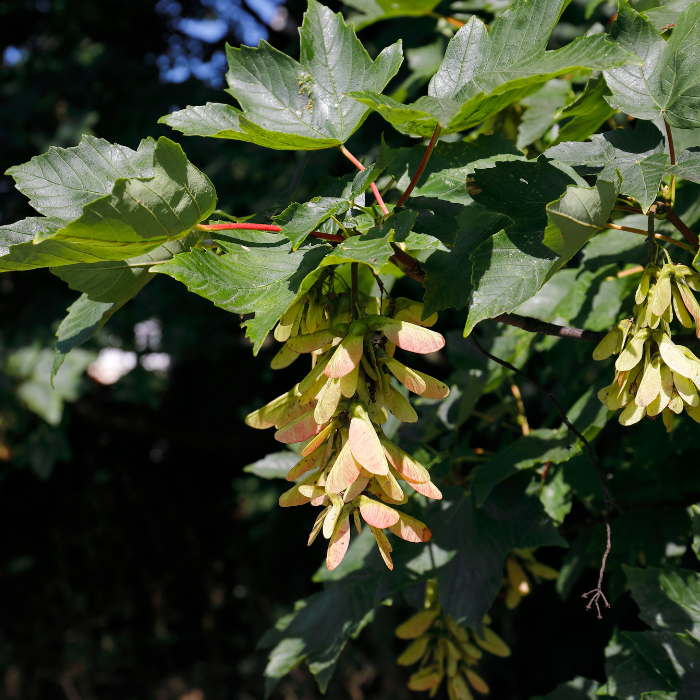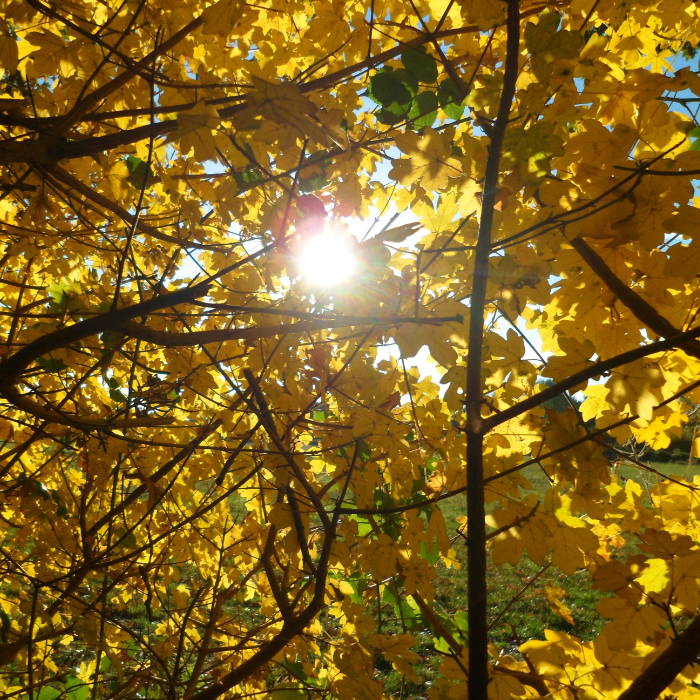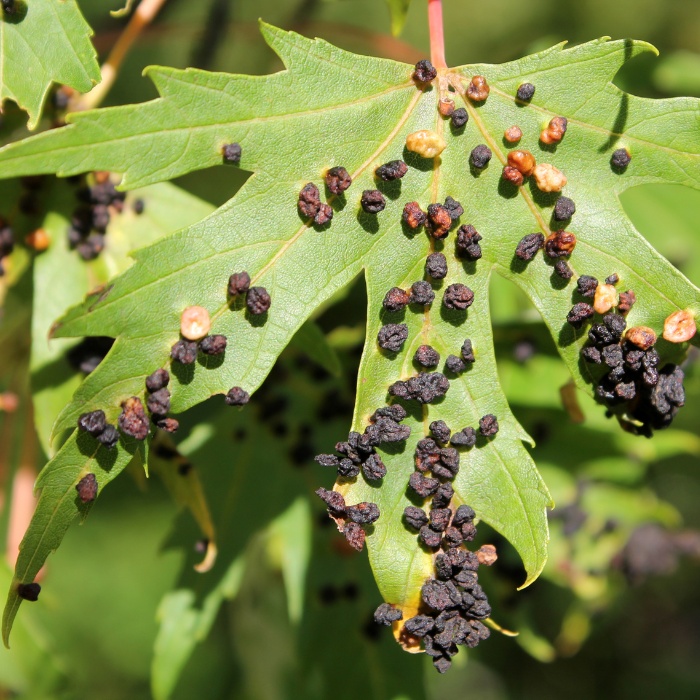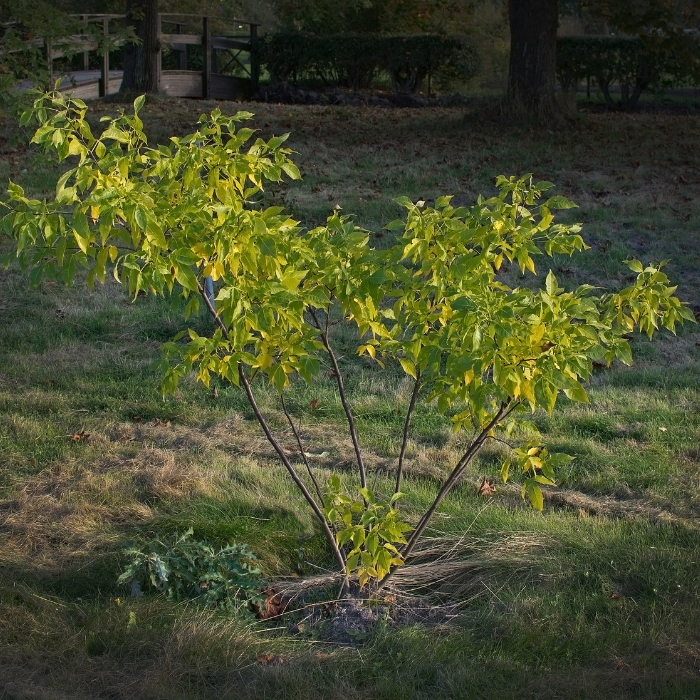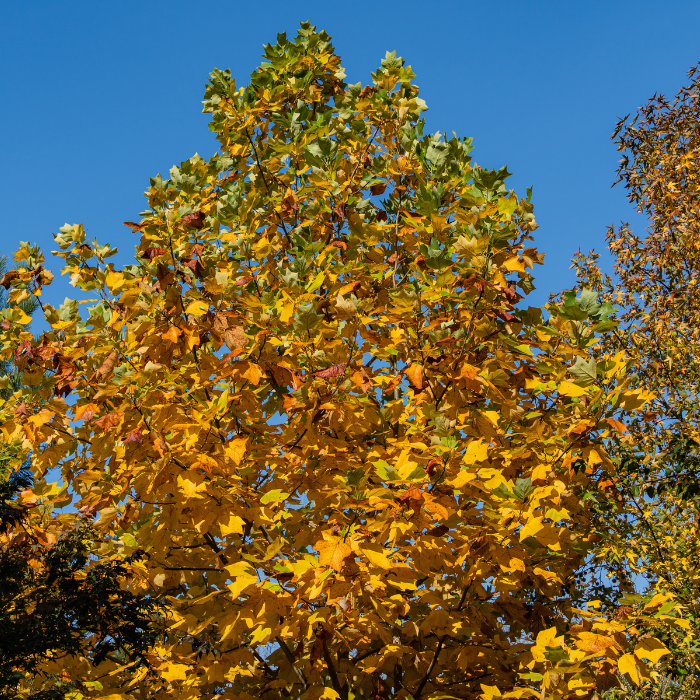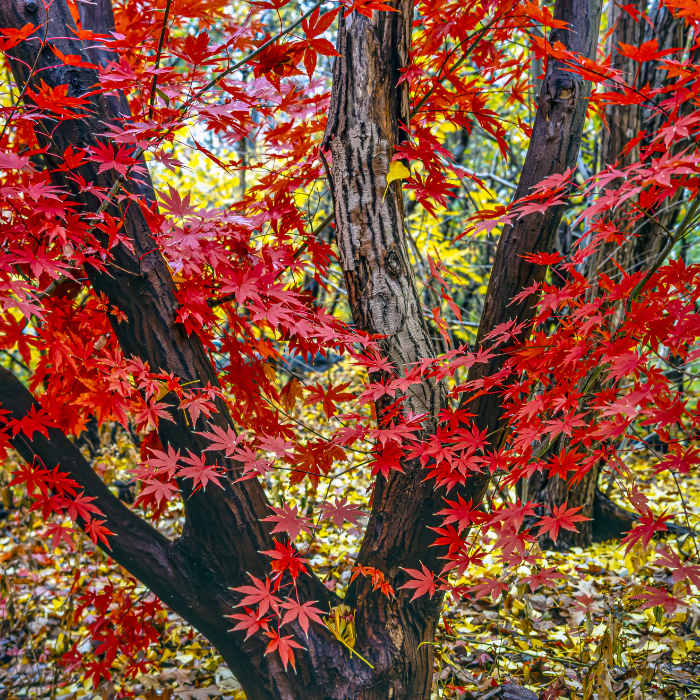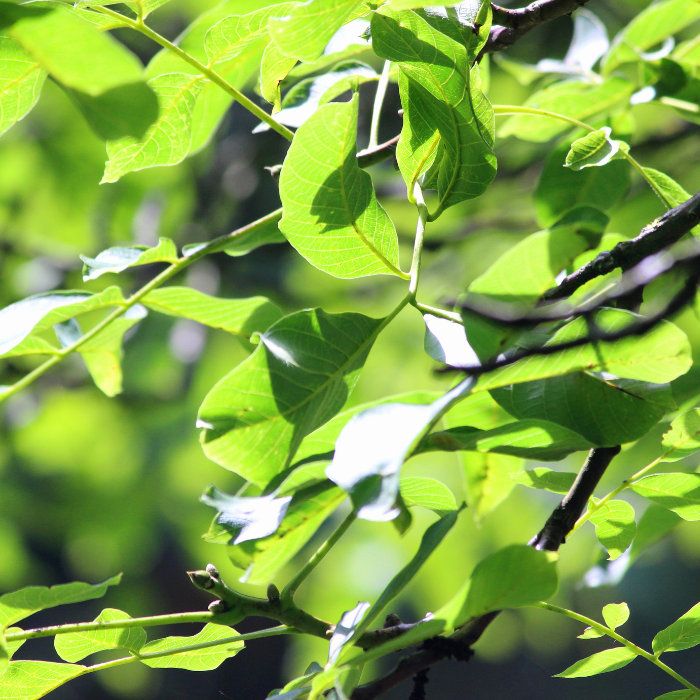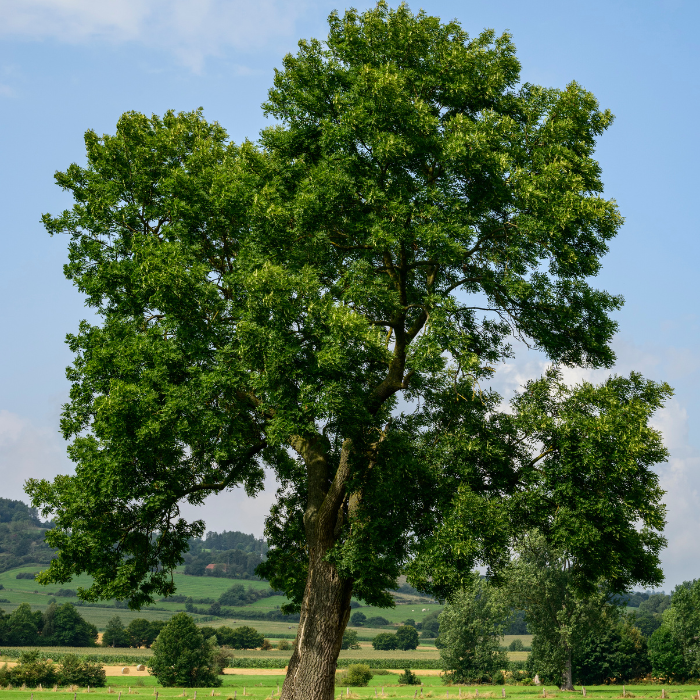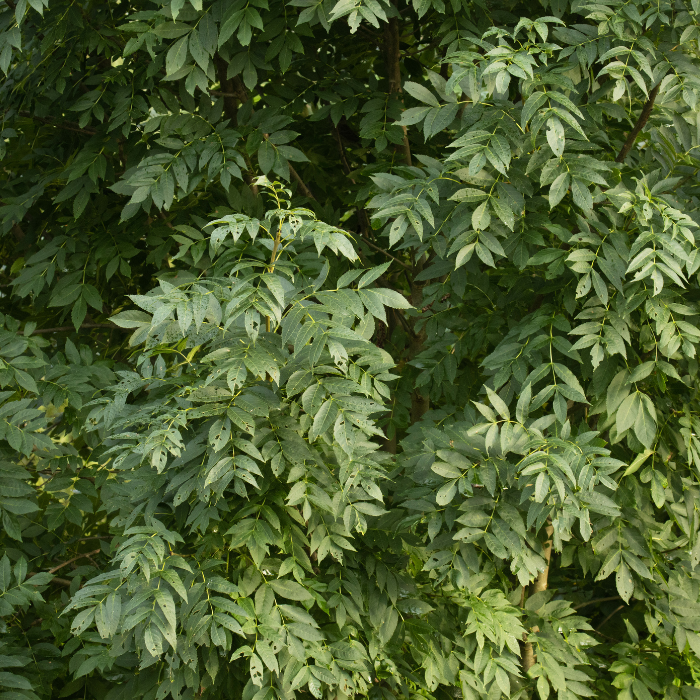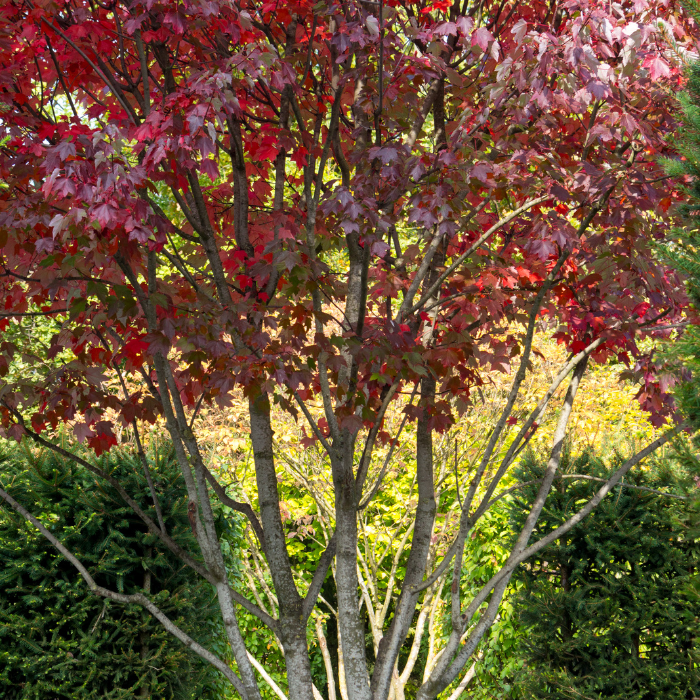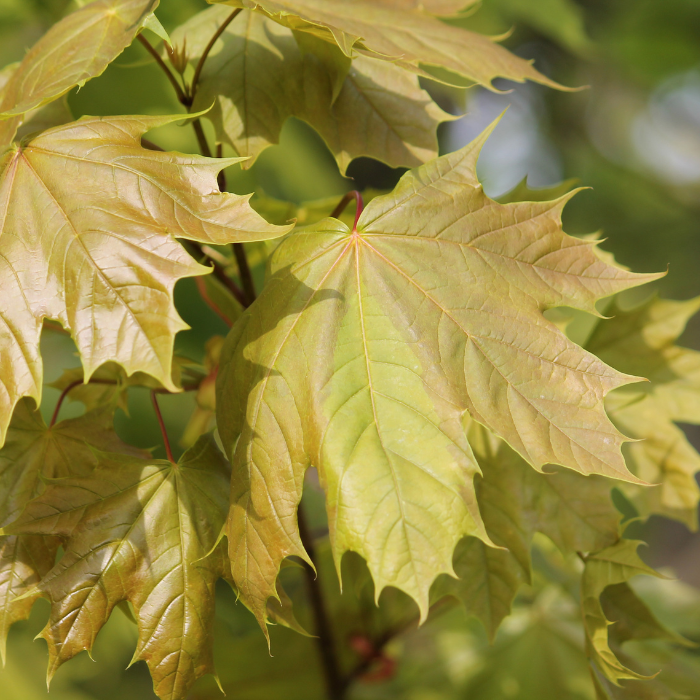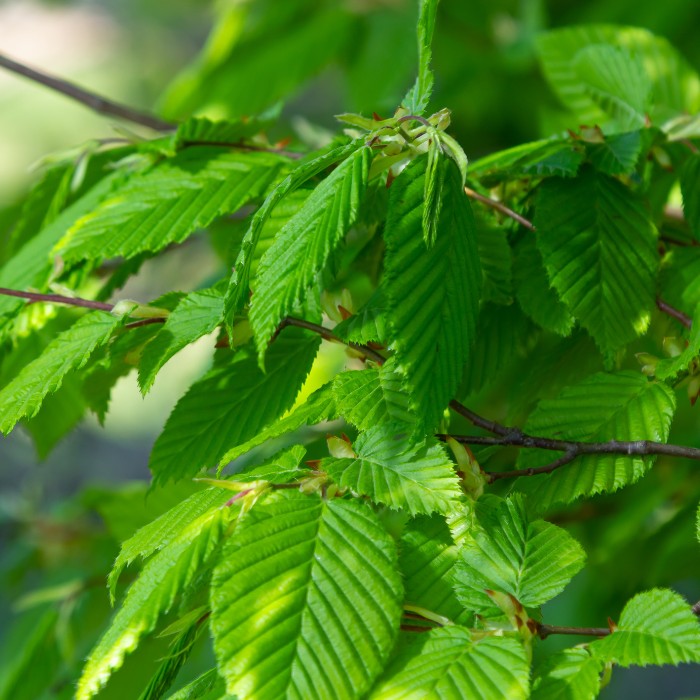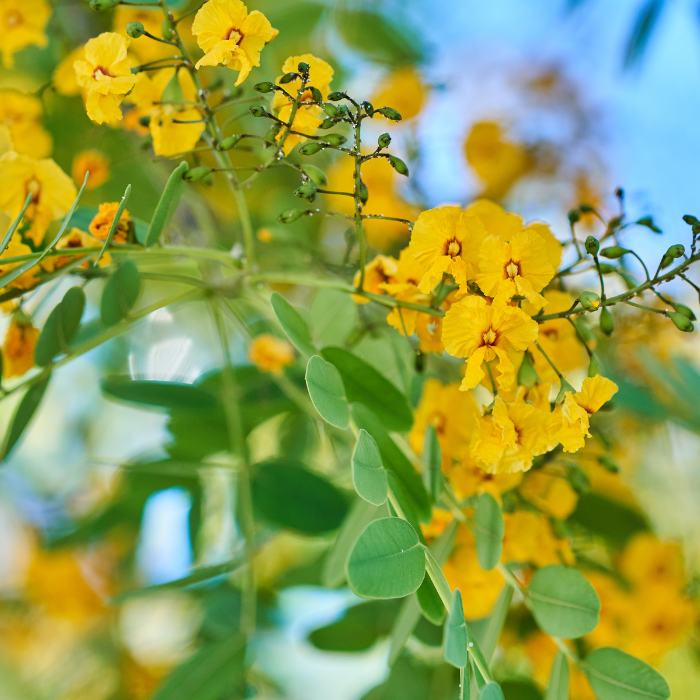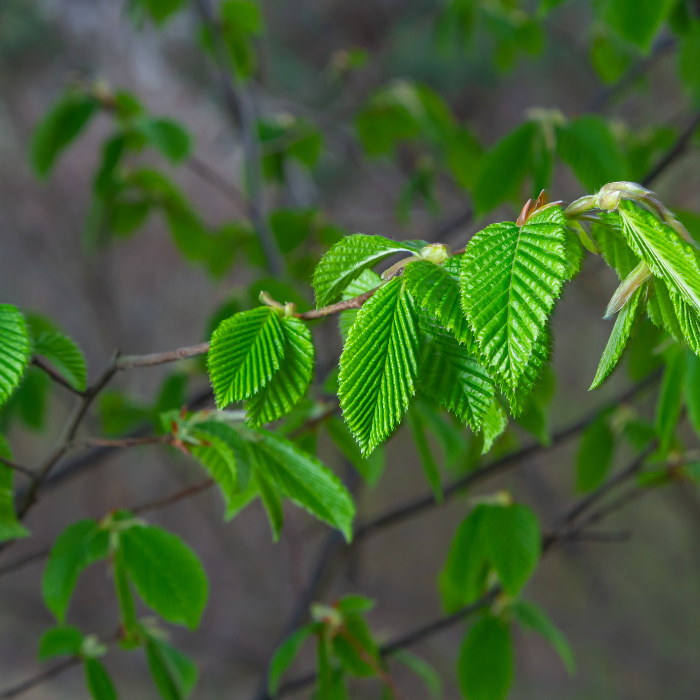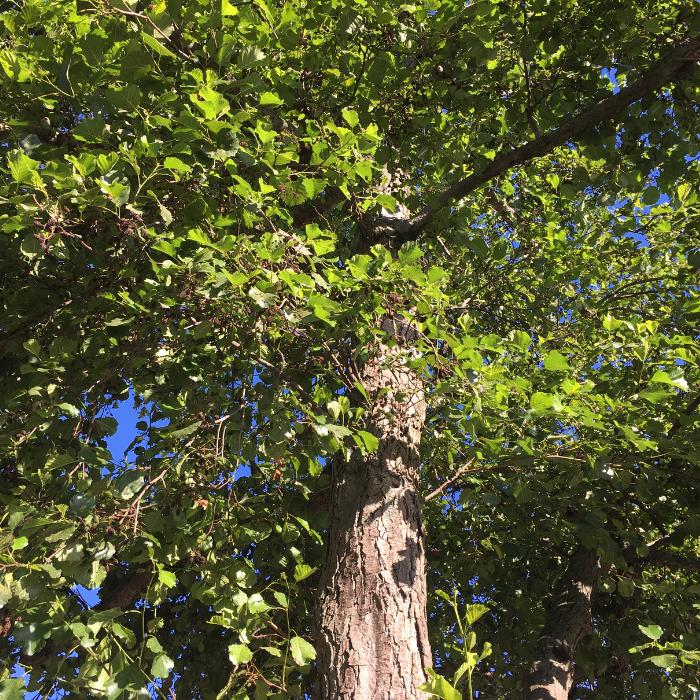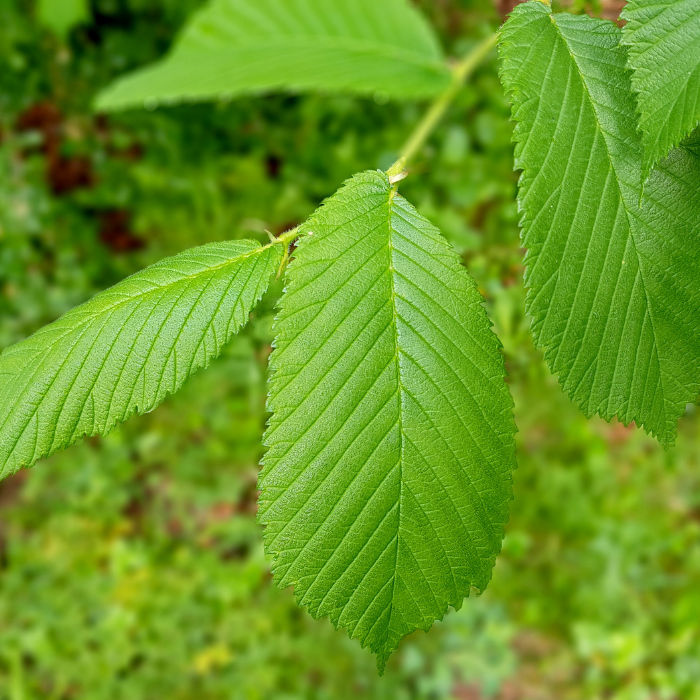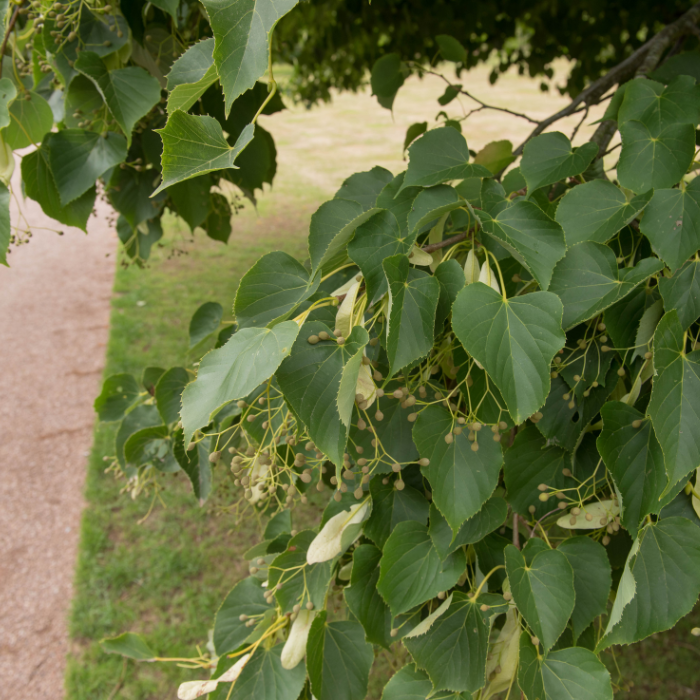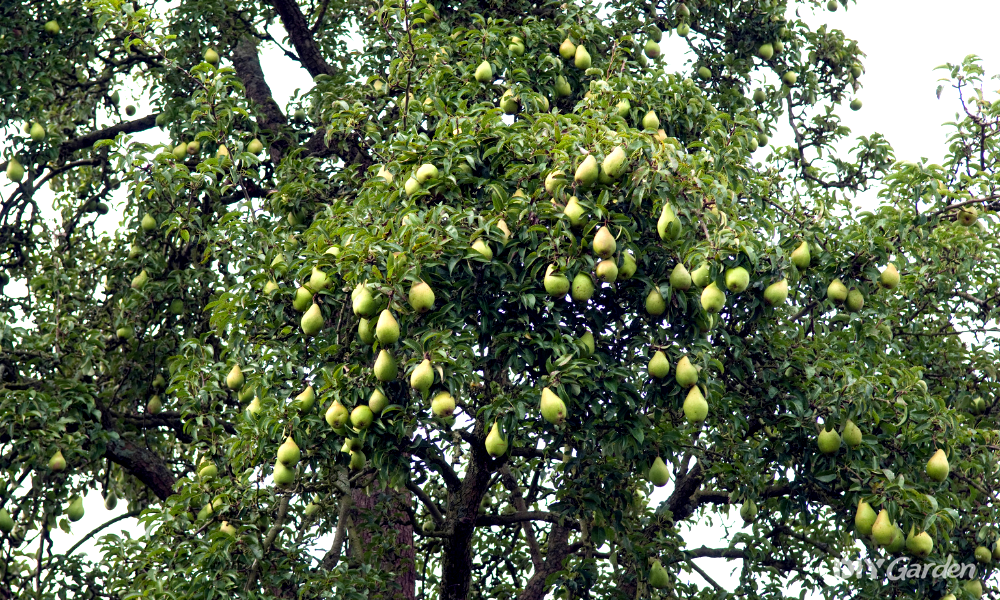
Helicopter seeds will have a prominent place in many of our memories. For me, thinking of helicopter seeds reminds me of a beautiful red maple on my walk home from school. My classmates and I used to pick the seeds up in handfuls and toss them into the air, watching them swivel down until they reached the ground.
It’s common to assume that only one tree has helicopter seeds, but luckily, this isn’t the case. Sycamore, maple, ash, and elm trees all produce beautiful samaras that mimic a helicopter’s propellers in unique ways.
In this blog post, we’ll explore 18 types of trees with helicopter seeds, including each tree’s best qualities and suitability for your garden.
1. Sycamore (Acer pseudoplatanus)
Sycamore trees are known for two main qualities: their leaves and their seeds. The sycamore’s leaves are a hallmark of its identity. They’re large, deeply lobed, and shaped like an open palm. As they sway in the breeze, the leaves create a soothing rustling sound. These are excellent trees for your garden to create year-round ambience and shade during the warmer months.
The sycamore tree produces double seeds, also known as double samara, where two seeds are joined together. This gives it its common name, as the seeds look like helicopter propellers. They also used to be known as spinning jennies back in the day.
2. Field Maple (Acer campestre)
Field maples are native to the UK, so they are the ideal choice for a garden celebrating native beauty. You may have seen the field maple in UK woodlands, gardens, and hedgerows, as they’re an extremely common choice for these spots.
Like sycamore trees, the field maple has double seeds, but these form an almost horizontal line rather than a V-shape like the sycamore seeds. They’re also more yellow than green in colour and have a slight pinky hue.
3. Silver Maple (Acer saccharium)
The field maple originates from the eastern, Midwestern, and southern US and has historically been a popular street plant in these regions. However, this tree’s popularity has plummeted since WWII due to the numerous seedlings it produces and its unattractive look when not trained or pruned. In some cities and towns, the silver maple is actually banned for street use due to this.
The seeds of the silver maple tend to be green when immature but turn to a light tan or beige colour as they age. They differ from the others mentioned so far because they only have a single wing, producing a single propeller look as they spin.
Unfortunately, due to our climate, the silver maple rarely produces seeds in the UK, so I don’t recommend growing it for this quality!
4. Common Hoptree (Ptelea trifoliata)
The common hoptree isn’t as widely known as some other trees with helicopter seeds, but its distinctive qualities and captivating seed shape make it a sight to behold. Common hoptree has leaves that are similar to poison ivy, composed of three leaflets.
And if you’re interested in the art of bonsai, you’ll be pleased to know that the hoptree’s compact size and attractive foliage make it a potential candidate for bonsai cultivation.
The seeds of the common hoptree are unlike any other on this list. Instead of having wings, the seeds are encased in a circular, veined shell that is so thin it is nearly translucent. They are around 2.5 cm in diameter and spin in the wind when they fall from the tree.
5. Tulip Tree (Liriodendron tulipifera)
The tulip tree is a native of eastern North America and is particularly valued for its timber – it’s considered one of the largest, and hence most valuable, hardwoods in this region.
The tulip tree produces a florette of winged seeds in a cone-like shape in the autumn, following on from its delicate, beautiful flowers in the spring. These light, feathery seeds drift along great distances in the wind.
6. Japanese Maple (Acer palmatum)
Japanese maples are a top choice for an oriental-inspired garden or even a container garden, as they grow well in containers as well as in the ground. These trees grow slowly, staying small for a long time. However, their small stature doesn’t make them any less graceful.
The Japanese maple’s seeds make this plant captivating in the lead-up to summer. When the double-winged seeds first appear, they’re a soothing shade of green, but as they mature, they deepen into a red-purple hue that can’t be missed. And as September and October arrive, these will transform again into beige crinkly seeds that will soon drop.
READ NEXT: 28 Zen Japanese Garden Ideas UK (Modern & Budget-Friendly)
7. Green Ash (Fraxinus pennsylvanica)
Green ash is a gorgeous, elegant tree that can live for up to 200 years. In this time, it can grow to 20 m tall, making it a perfect addition to a large or medium-sized garden. Green ash typically has dark green leaves. However, during the autumn, these turn to a paler yellow colour.
Green ash seeds don’t have wings but instead sport long seed pods that flit in the wind when they fall from the tree. Like all trees that produce helicopter seeds, you can grow a tree from seed by planting the whole seed pod with the seed encased in it in the ground.
8. Black Ash (Fraxinus nigra)
Black ash is a North American native tree, so it typically grows in regions like eastern Canada and the northeastern US, but not so much in the UK. It prefers wetland habitats and grows best in swampy and marshy areas.
The helicopter seeds of the black ash are very similar to the green ash tree. With a quick glance, you would think they’re identical. However, if you look closely, you’ll see that green ash seeds are thinner where they meet the branch and balloon out like a teardrop. In contrast, black ash’s seeds are a long, uniform oval shape.
9. Velvet Ash (Fraxinus velutina)
And the third and final in the trio of ash trees on this list is the velvet ash. As this tree is also native to areas far afield from the UK (southwestern US and northern Mexico), you won’t find it growing much here. However, if you are set on this tree and want a challenge, you can try and replicate its hot, dry climate by placing it in a sheltered spot with plenty of sunlight and protection from our heavy rains.
Velvet ash seeds collect at the end of the branches in bundles and are shaped in a similar oblong shape to those of the black ash and green ash varieties.
10. Red Maple (Acer rubrum)
The red maple boasts brilliant foliage that transforms from green to yellow to burgundy in the autumn. It’s this quality that makes the red maple most appealing, much like its relative – the Japanese maple.
This tree grows up to 25 m tall, so it tends to be too big for gardens. However, it may suit extremely large gardens or stately homes.
The red maple’s leaves sport a double wing shape and an eye-catching red-pink hue, like the Japanese maple.
11. Norway Maple (Acer platanoides)
Another helicopter seed-producing maple is the Norway maple. You probably assumed that the Norway maple is native to, well, Norway! But in fact, this isn’t the case. The Norway maple is native to eastern and central Europe.
Birds and small mammals absolutely adore this plant’s seeds; many moth caterpillars love to munch on their leaves, and pollinators simply can’t get enough of its nectar and pollen! It’s safe to say that the Norway maple is a hit with the local wildlife!
The seeds look very similar to the sycamore, but the angle is wider between the two wings in the Norway maple.
12. Winged Elm (Ulmus alata)
The winged elm is a medium-sized that grows to a maximum of 27 m tall, making it a perfect choice for a big or medium-sized back garden. This is a popular tree that lines many streets and parks in the US and is also a stand-out choice for a bonsai due to its beautiful foliage that changes colour in autumn.
The tree flowers in May and then produces seeds which mature in June. The winged elm seeds have an almost rosehip-shaped appearance – an elongated globe with a two-pronged pointed tip.
13. Tree of Heaven (Ailanthus altissima)
The tree of heaven came over to the UK in 1751 from China as an ornamental tree. If you want a tree that produces seeds in abundance, then this tree surely will be heaven for you. A single, 40-year-old tree is said to produce somewhere in the region of 10 million seeds across its lifetime. As the tree of heaven can often live 100 years, this equates to over 50 million seeds!
Unfortunately, its extensive proliferation and ability to produce suckers that feed from the mother tree are causing worries that the tree may become invasive, so think twice before planting this in your garden!
14. Tipu Tree (Tipuana tipu)
The tipu tree is a medium-sized flowering tree from the legume family. As it’s native to Bolivia, you’ll mostly find it in the hotter regions of the world. It’s most well-known for its capabilities as a shade or accent tree because of its 18 m height and voluminous yellow flowers. It also produces feather-like seed pods that look similar to the silver maple’s seeds but are wider.
We can care for a tipu tree in the UK by giving it full sun or partial shade and protection from harsh winds and frosts. However, don’t expect it to produce seeds, as it may struggle to adapt to the vastly different climate.
15. Hornbeam (Carpinus betulus)
Hornbeam seeds, like many on this list, have designated wings that help them spin (or fly) as they fall. This particular tree’s seeds bunch up on small branches and hang from the main branches in a cluster, like a bunch of grapes. Their single wing then helps them to auto-rotate as they fall from the tree.
If you want a tough tree, look no further than the hornbeam. The hornbeam is well-known for its hardiness in cold weather and frosts. What’s more, this tree is evergreen, so it will keep its leaves throughout the whole year. This quality gives the hornbeam an edge over many trees on this list, particularly if you want to use it for privacy or shelter.
READ NEXT: 7 Fast Growing Trees For More Privacy In Your Garden
16. Common Alder (Alnus glutinosa)
The common alder is native to the UK and so thrives in our weather conditions. This tree is best suited to wet, poorly drained soils, so it will work well if your garden frequently gets waterlogged or is beside a body of water.
If you want to grow a tree from seed, you’re in luck with this tree. The common alder seeds are quite easy to grow, as you can break their dormancy by giving them a short stint in the fridge. But first, soak the seeds in water for 24 hours and drain the water away before placing them in a zip-lock bag. Then, put them in the fridge, wait 4-6 weeks, then sow them in fine perlite, sad, or moist vermiculite.
17. English Elm (Ulmus procera)
Unlike the Norway maple, the English elm doesn’t trick us in its name – it is a UK-native plant, through and through. Because of this, it grew well in gardens, parks, and along hedgerows for many years.
However, unfortunately, it was hit by Dutch elm disease in the 1920s, which killed around 10 – 40% of our elm trees. Due to this, only around 100 mature trees remain in England.
Nevertheless, the ones that do produce many circular seed pods each year that take flight and scatter themselves across neighbouring areas.
18. Common Lime (Tilia x europaea)
The common lime, also known as the European lime, is a naturally occurring hybrid of the small-leaved lime and large-leaved lime trees. Despite what the name may suggest, this isn’t a common garden tree. Instead, you’re more likely to find it in a country estate or out in the wild.
The common lime produces a flurry of white flower clusters in June and July before these turn into seeds. The seeds have a single wing, are a rounded-oval shape, and have a pointed tip. This creates quite the show when they fall from the tree – they spin and spin and don’t stop spinning until they hit the ground!
READ NEXT: 50 Different Types of Fruit Trees
Final Word on Trees With Helicopter Seeds
Trees with helicopter seeds are a spectacle that we can all enjoy and admire. But this isn’t the only point of value of these trees. Each of them has unique qualities that make them beautiful in their own right. However, some are better suited to UK gardens than others.
The decision is yours which you’d prefer in your garden. Would you like a lofty tree like the winged elm or green ash for your big garden? Or a showstopper of crimson colour, such as the red and Japanese maples?
So, what will it be?
FAQs
What are the seeds of a sycamore tree called?
Sycamore trees produce seeds known as “samaras” in late spring to early summer in the UK. These seeds have a distinctive winged appearance, which has resulted in them commonly being known as “helicopter seeds.” Many children in the UK have memories of plucking these seeds from the tree and throwing them into the air to watch them spin like propellers in the air.
Why are helicopter seeds important?
Helicopter seeds have the unique ability to travel far in the wind due to their distinctive papery wings. Unlike many tree seeds that simply fall and land underneath the parent tree, helicopter seeds can travel far distances from the parent plant, increasing their chance of growing into a healthy sapling.
Helicopter seeds are also an important source of food for small mammals and birds, such as bullfinches.
Which tree is called “helicopter tree”?
Gyrocarpus americanus is a tall, thin tree native to the west tropical biome. This ranges from tropical Africa right to the Pacific, central Mexico, and Venezuela. It’s called the helicopter tree – as well as the propeller tree or whirly whirly tree – because its seed pods look like miniature helicopters. Unfortunately, this tropical tree isn’t common in the UK.
What tree seeds look like propellers?
Various trees produce seeds, or samaras, that look like propellers. We call these “helicopter seeds,” and the most common tree varieties to produce them are sycamore, maple, ash, and elm trees.
What tree is mistaken for a sycamore tree?
The Norway maple tree is often mistaken for a sycamore tree because they both have broad leaves that are divided into lobes that resemble the shape of an open hand. They also have similar leaf colours, sporting a medium to dark green shade. You’ll also find them in the same spots – in both urban and suburban environments as ornamental trees.
However, they differ in their seeds. Sycamore double-winged seeds are more rounded and closer together, whereas the Norway maple seeds tend to be further apart and are pointed at their tips.
Sycamore trees also tend to have a more mottled and peeling bark, while Norway maples have a smoother bark that can appear greyish.
So, you’ve whetted your appetite for trees and can’t wait to buy one. But do you know how to tend to it? For this, you’ll need to arm yourself with The Best Telescopic Tree Pruners.
